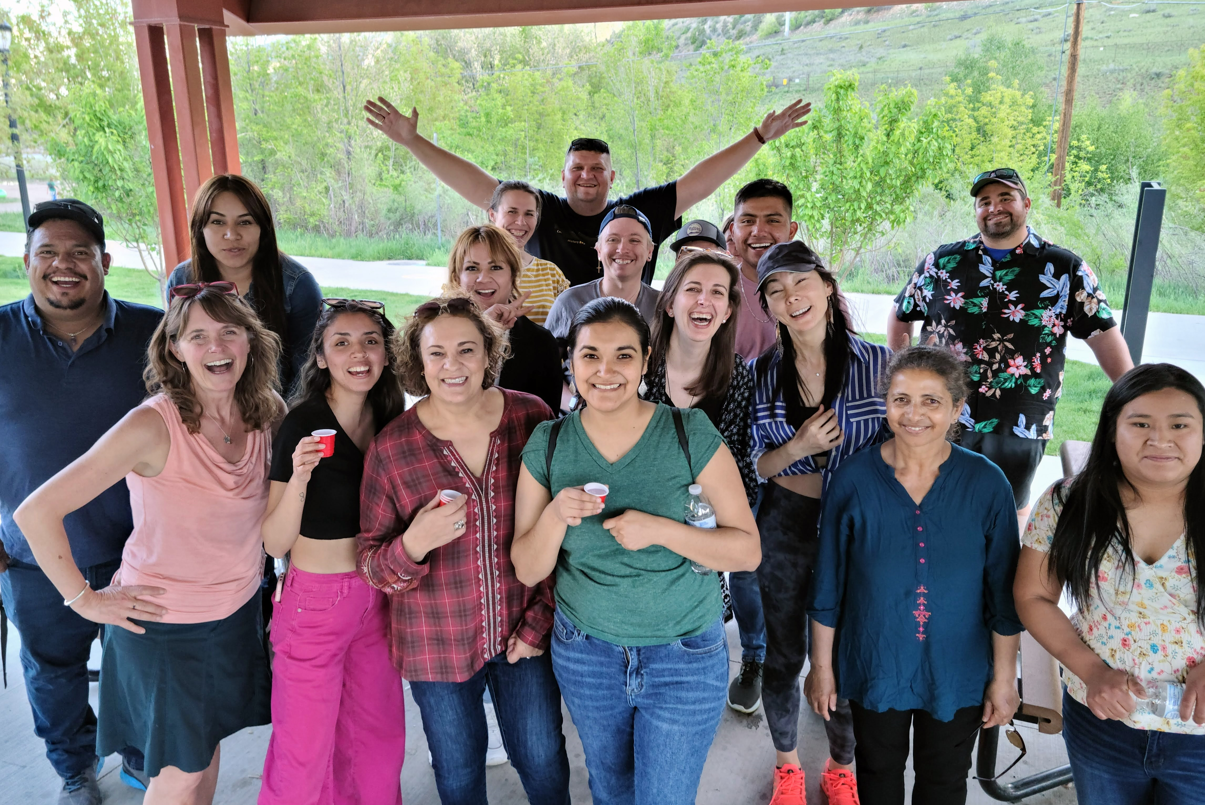Who Shall Win in the Battle to Teach English as a Second Language?
With free language-learning apps aplenty and fast-acting AI bots providing near-instantaneous translation, why are classrooms where English is taught as a second language bursting at the seams? Lead ESL Teacher at the Adult Education Center’s Durango campus, Michelle Hall offers her insights into this paradox.
Babbel. DuoLingo. Rosetta Stone. The world is flush with digitized programs able to teach people almost any language currently in existence. They run the gamut from free to pricey. Early iterations sprang up as far back as 2010 and yet, surprisingly, very few scientific studies have been conducted to measure their efficacy.

In a recent review of the existing academic literature on language learning apps, researchers found that digital apps do provide effective vocabulary gains. They also offer students the chance to practice more frequently should they hop on the app while riding the bus or filling some other pocket of free time.
These benefits are not to be underestimated in the battle that is language acquisition, notes Michelle Hall. “Learning a language is a multipart process. You need to hone your listening, spelling, writing, reading, speaking, vocabulary, and more,” she explains. Although some apps can address a few of these areas, only the classroom experience touches on all of them in one sitting.
Michelle is a longtime English as a Second-Language (ESL) teacher. Besides leading advanced ESL classes, she also serves her colleague’s continued learning as the Lead Teacher. She plans professional development for the other teachers and oversees the ESL volunteer tutor program. Her experience provides her with a perspective on language learning that is equal parts broad and granular.
Surprisingly, she is not opposed to students using apps. “I do encourage them to use apps and also we’ll even use them in class. I show them how to use the app and why it can be a supplement to their class.”
The evidence from research backs up her decision. Apps seem to motivate students to keep learning outside of the classroom. And having spent time on an app can make a student more engaged during class, too. Achieving that engagement can be struggle for even the most talented teacher, Michelle points out. A lot of students are combatting many barriers—they may be the sole breadwinner of the family; they are anxious about residency paperwork falling through bureaucratic cracks; they may be the primary caretaker of unwell or elderly family members. Pile on all that the nagging sense of fear any human might feel to take on learning a language as an adult after years away from school.
Some students fight against that inner narrative of: I’m too old to learn a language!
 Nonetheless, the classroom is where the real magic happens. “The biggest thing I think [you get] is the community of other students that they meet. It creates this camaraderie and this sense of belonging. That is what I think keeps them coming to class. A lot of my students have made great friends and they can meet all various languages and cultures. It’s so cool!”
Nonetheless, the classroom is where the real magic happens. “The biggest thing I think [you get] is the community of other students that they meet. It creates this camaraderie and this sense of belonging. That is what I think keeps them coming to class. A lot of my students have made great friends and they can meet all various languages and cultures. It’s so cool!”
The time students will spend learning is high-impact. “They can come for a total of nine hours per week. No one is going to sit on an app for nine hours. She likens it to the difference between doing a home workout video versus meeting up with a personal trainer. Whereas the smallest distraction can derail the home aerobics, a personal trainer (or ESL teacher) brooks no mercy!
She notes that there’s nothing quite like the conversational interaction students get in class. “We do a lot of conversation. [A lot of apps] don’t give you this conversation experience. So they’re applying their learning in class because there’s far more conversational practice.”
Students are also directly exposed to the local services and businesses they may need to thrive. From the local town and county offices all the way to state-level services, AEC teachers help the ESL students find and attend local events and discover available resources. The train. The library. The Rec Center. Talking to their kids’ teachers or going to the doctor. Networking with Compañeros for legal supports. This is just a short list of the places ESL students are taken in order to learn about their new community and utilize their English skills at the same time.
As if those benefits were not enough, the AEC’s classes are free and come with limitless free tutoring.
Undoubtedly, many factors are likely driving higher numbers of students to ESL classrooms, but Michelle would never downplay the power of human interaction. She notes that unlike the caring staff at the AEC, an app—no matter how fun to use—will never bother getting to know a student as a human being with a moving story and meaningful reason for making Durango (and the United States) their new home.
“We touch their lives, but they do the same for us,” Michelle says.


